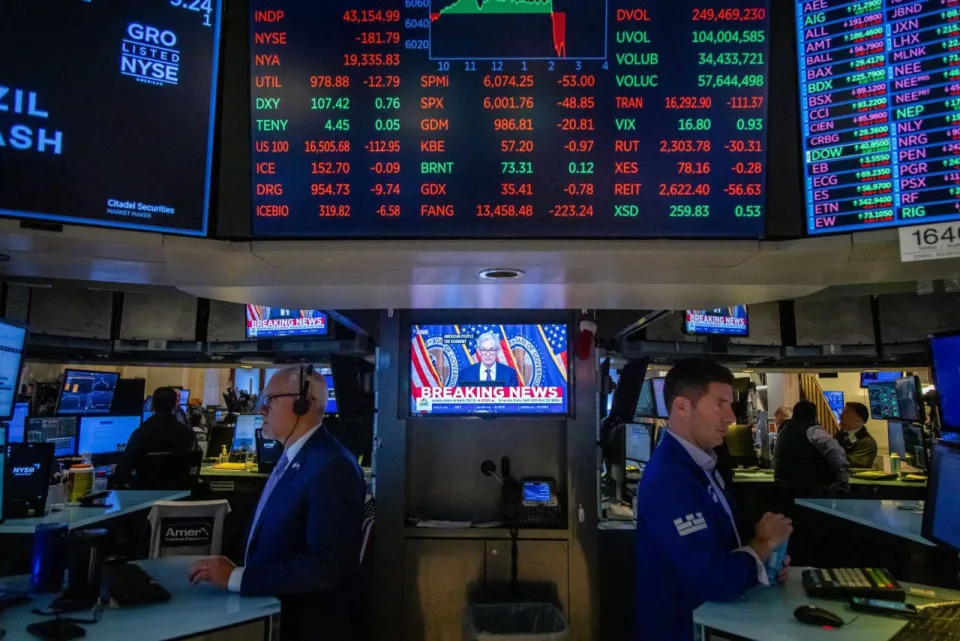News
What I Got Right About Markets in 2024—and Very Wrong

I started out the year arguing that there’s no bubble in artificial-intelligence stocks. I’ve ended it concerned about froth after anything AI-related soared in price and the market as a whole reached dizzying heights.
The easiest excuse for a columnist is that yesterday’s articles are, as Brits say, today’s fish-and-chip wrappers. But smart investors keep a diary of why they bought or sold so they can avoid rationalizing the outcome later. And writers, too, should learn from their mistakes.
This year markets cared about three things: the booming economy and inflation, artificial intelligence and Donald Trump’s re-election. Streetwise had a fairly simple take on each.
The economy was too strong , which meant the Federal Reserve was likely to have to keep rates higher than expected. As the year went on, the economy stayed far stronger than expected; third-quarter growth was raised to 3.1% at an annual rate.
Then the Fed at its December meeting finally acknowledged that the strong economy meant core inflation—excluding volatile food and energy—would be higher next year than it started out forecasting for this year. Stocks plummeted.
As it turned out, I was wrong. True, 2024 core inflation came in higher than the median Fed policymaker predicted at the end of 2023. True, the economy grew almost twice as fast as predicted. Yet, contrary to what I expected, the Fed cut rates more than it predicted at the outset of the year. My excuse: If the Fed itself doesn’t understand what economists call its “reaction function,” what chance is there for the rest of us?
For the first half of the year, though, the Fed was keeping rates higher than the markets expected, and that held back the market—so long as you ignore the biggest stocks. The equal-weighted S&P 500 was up just 4% by the end of June, exactly the same as the (normally-weighted) MSCI index of the rest of the world. Meanwhile the ordinary S&P, where the top 10 stocks now account for more than a third of the weight, was up 14%.
AI didn’t start out the year as a bubble , but it was the growing excitement about it that drove those big stocks to such outperformance that they lifted the entire market.
Trump’s big win drove great excitement in stocks and bitcoin, as investors focused on his plans to cut taxes and reduce regulations. I looked both at the inconsistency in what counted as a Trump Trade , as stocks and sectors were briefly focused on then discarded, and at the risks from tariffs and overstimulating a hot economy.
The risks have come back into focus, with the S&P equal-weight and Russell 2000 index of smaller companies—which suffer more from higher rates—both giving up all their postelection gains. Even bitcoin has fallen back below $100,000, though it remains enormously higher on hopes that anti-crypto regulations will be ditched .
My biggest mistake this year was thinking that the summer selloff marked a switch of market narrative. I thought investors were moving from worrying about overheating to thinking again about recession, and the story would last given some weak economic data. But a monster half-percentage-point rate cut by the Fed combined with upward revisions to the data to calm everyone down. In the end, the selloff merely cleared out some of the excess speculation, especially in the weak-yen trade.
Still, at least I wasn’t taken in by the bears’ belief that the 10-year Treasury yield once again being higher than the 2-year yield presaged imminent recession. Recession might happen, but the Fed wasn’t cutting rates because it thought we were on the cusp of one. This is the usual reason such a “disinversion” of the yield curve happens.
The big lesson for the outlook now is to remember that a big drop in stocks can be purely temporary when driven by sentiment and positioning. Back in 2020 , I got this right. But in the summer I thought the drop was about fundamentals; it turned out to be mostly the unwind of a crowded trade .
The plunge in share prices shortly before Christmas could be either fundamentals or crowding. Investors were wildly optimistic both about AI and American exceptionalism . Next year might give us answers on both. Will AI be able to overcome hallucinations and high energy requirements to deliver profitable, useful applications that boost productivity? Will the U.S. economy maintain its extraordinary lead?
My guess continues to be that AI hype has run ahead of reality, but the scale of research spending means breakthroughs are plausible, if unpredictable. My worries about the economy focus on the risk of a trade war and the danger that growth has been a mere figment of huge government deficits. Both depend in large part on whether Trump does what he said. If he both starts a trade war and, with the help of billionaire Elon Musk, cuts spending so much that the deficit falls, a sharp slowdown would be in the cards next year.
Write to James Mackintosh at james.mackintosh@wsj.com

